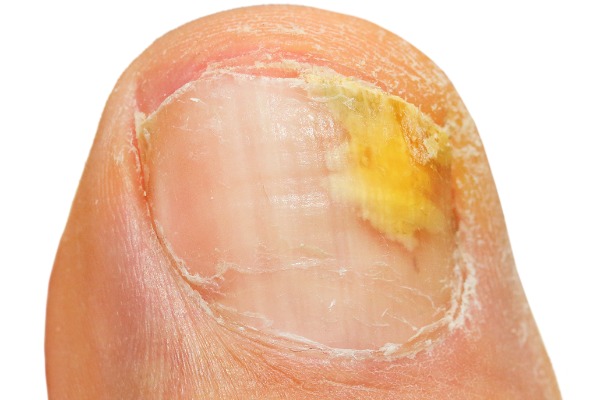Fungal nail infections, known medically as Onychomycosis, is caused by the growth of a fungus in the nail and possibly the nail bed. All fungal spores grow where the conditions are dark, moist and warm, and hands and feet are a perfect environment for them.
You can be infected from changing rooms or from an Athlete’s foot infection or even from cosmetic treatment such as manicures and pedicures if the equipment is not sterilised effectively. Wherever it comes from, once you have an infection it is difficult to treat as the fungus doesn’t just grow on the surface but spreads down into the nail and into the skin underneath.
The first sign of an infection is a discolouration of the nail usually starting white and spreading up the nail as it grows carrying the infection with it. If the blood supply from the nail bed is affected the nail may turn red or black, and if it leads to a bacterial infection there may be a green discolouration. The nail becomes thickened and difficult to cut or trim and through the pressure from shoes it can become brittle and fragile and portions can break off. Eventually, the nail bed and nail may separate, and that becomes a more difficult problem to rectify. The infection must be eliminated from the base of the nail bed entirely to remove the fungus. A healthy, infection free nail will then grow out, with the infected portion removed by normal trimming. Depending on the growth rate it can take up to a year for the nail to return to normal. During this time, good hygiene should prevent further infection, but it is a rigorous routine.
Left untreated the problem is highly unlikely to resolve itself. There is also the risk that the infection will spread from digit to digit and to other people you are in close contact with.
